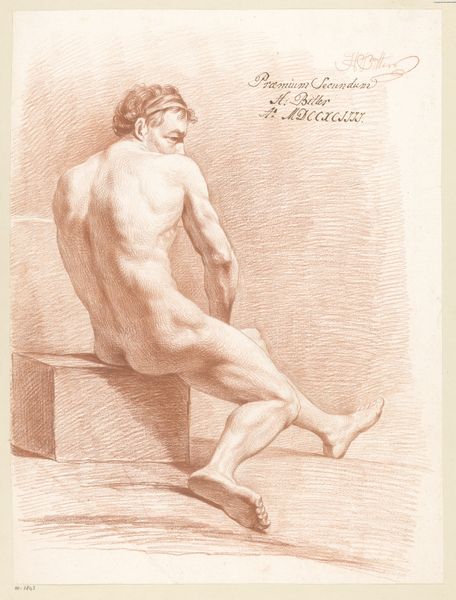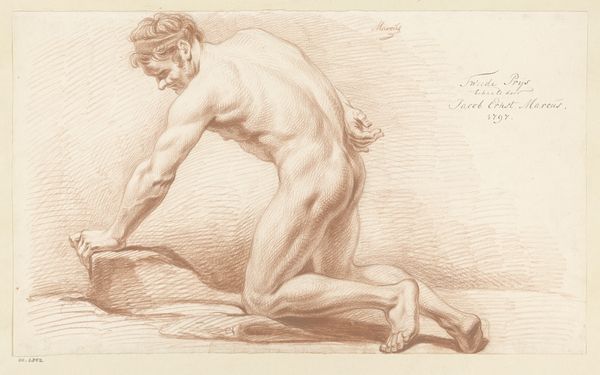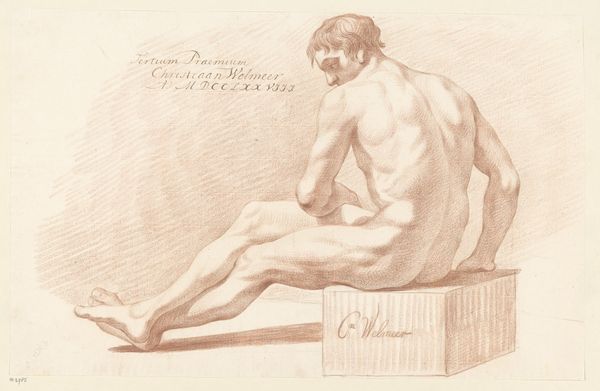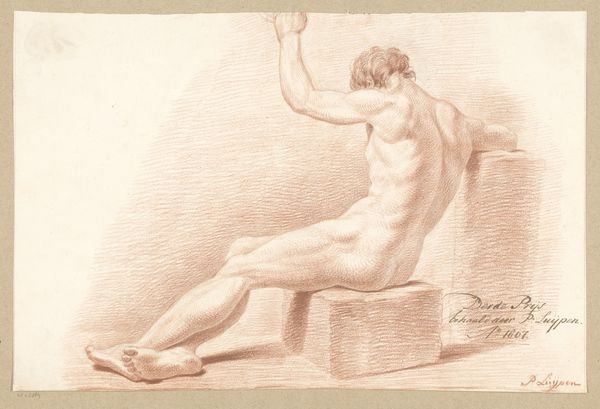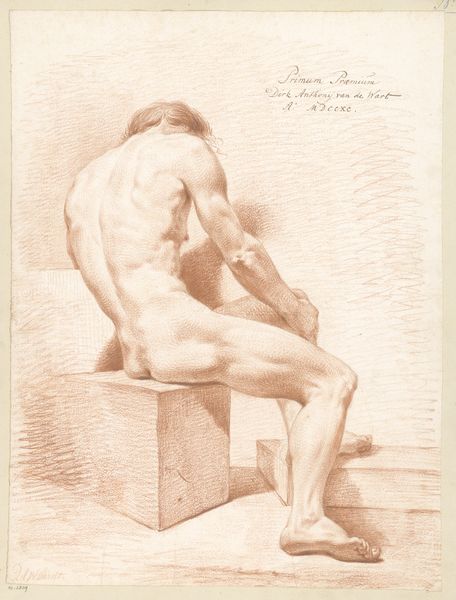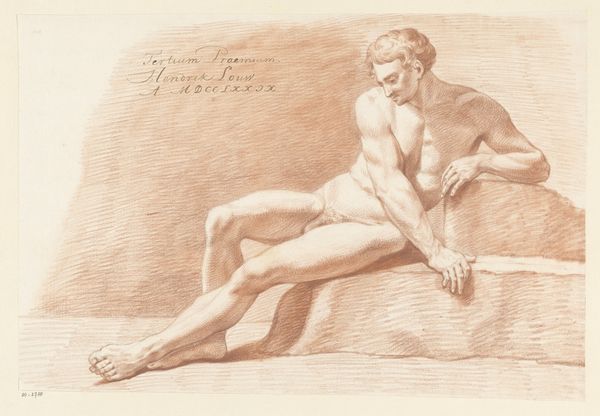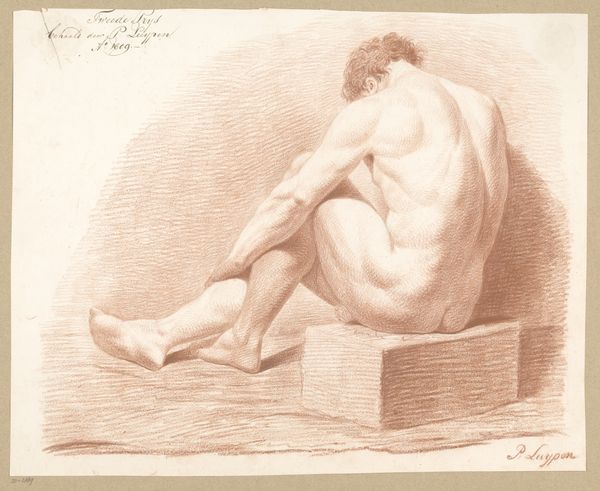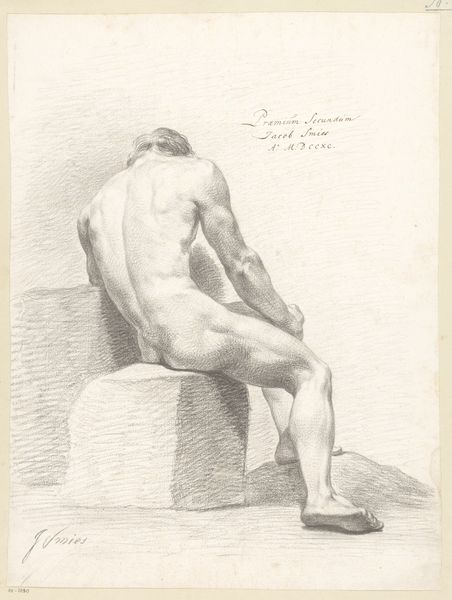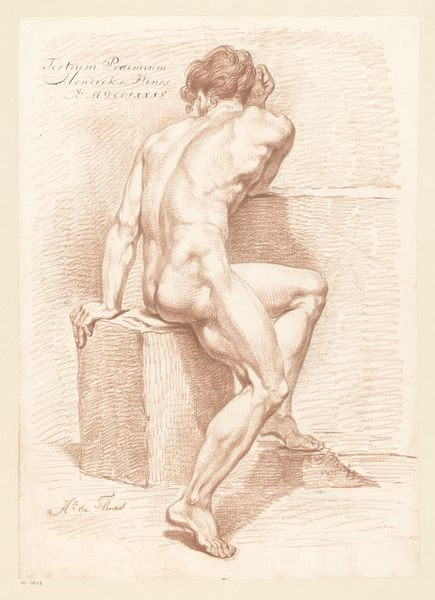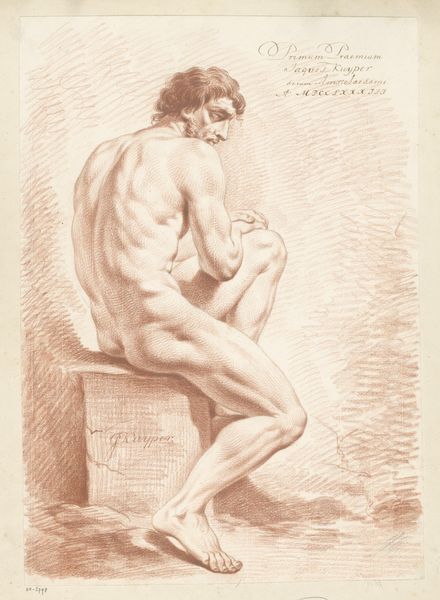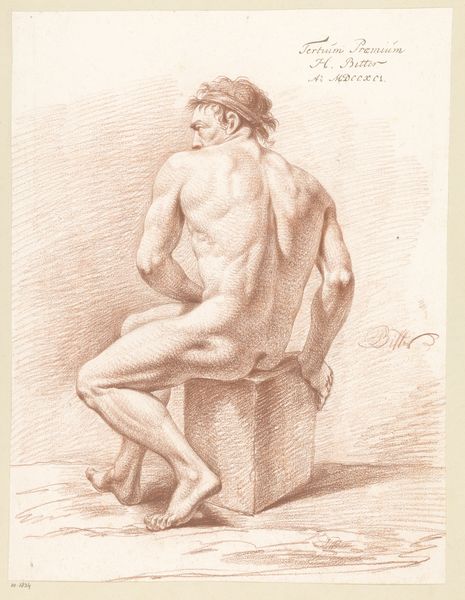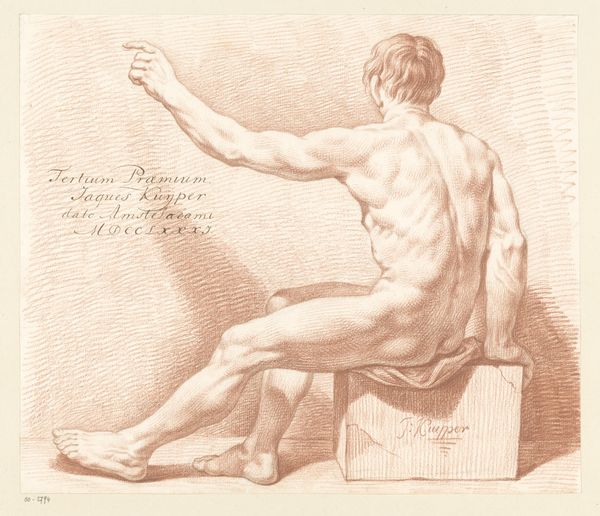
Zittend mannelijk naakt, op de rug gezien (1e prijs 1800) Possibly 1800 - 1812
0:00
0:00
drawing, pencil
#
drawing
#
amateur sketch
#
neoclacissism
#
facial expression drawing
#
light pencil work
#
pencil sketch
#
charcoal drawing
#
portrait reference
#
pencil drawing
#
pencil
#
animal drawing portrait
#
portrait drawing
#
facial study
#
academic-art
#
nude
Dimensions: height 426 mm, width 544 mm
Copyright: Rijks Museum: Open Domain
Curator: Here we have Jacobus Wijsman’s drawing, "Seated Male Nude, Seen From the Back, First Prize 1800," likely created between 1800 and 1812. The medium appears to be primarily pencil on paper. Editor: My first impression is a powerful sense of stillness. The use of a warm, sepia tone lends an almost sculptural quality to the figure, even though it’s a drawing. Curator: Indeed, the figure is rendered with impressive detail. The shadows and highlights emphasize the muscular form in a way that's highly reminiscent of neoclassical ideals. This type of study would have been common in academic settings at the time, as foundational artistic training. Editor: Precisely. The "first prize" inscription is also interesting, pointing to the art academy as an institution that validates certain visual codes for the human body. One wonders who the jurors were, and what specific qualities earned Wijsman the prize. Curator: What I find striking is the overall lack of unique cultural markings in the portrayal. The male form takes on a monumental universal quality. It seems stripped of individuality in the pursuit of some "perfected" type. Even the bare stage isolates the subject from any environment, reinforcing timeless value and authority, the hallmarks of classicism. Editor: I see your point. There's a conscious depersonalization at work here. The facelessness also encourages a reading of this drawing less as a portrait of someone in particular and more as an exercise or anatomical investigation in its aesthetic value. That foot in the foreground also attracts me-- a little raw almost, a flicker of realism contrasting ideal forms. Curator: That element disrupts, a reminder that these idealized figures are, after all, made of earth, even though they aspire to something ethereal. These pieces are also deeply political because images play roles in constructing public opinion on the body. Editor: Ultimately, an important drawing precisely for what it reveals about the artistic and cultural standards of its time. It invites one to question notions of the ‘ideal’ itself. Curator: I agree. And it underscores how the politics of art are embedded within its historical context.
Comments
No comments
Be the first to comment and join the conversation on the ultimate creative platform.
